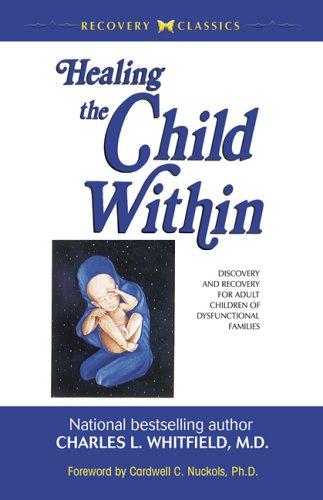Healing the Child Within:
Discovery and Recovery for Adult Children of Dysfunctional Families

Chapter 8
How Can We Heal Our Child Within?
To rediscover our True or Real Self and heal our Child Within, we can begin a process that involves the following four actions.
1) Discover and practice being our Real Self or Child Within.
2) Identify our ongoing physical, mental-emotional and spiritual needs. Practice getting these needs met with safe and supportive people.
3) Identify, re-experience and grieve the pain of our ungrieved losses or traumas in the presence of safe and supporting people.
4) Identify and work through our core issues (described below).
These actions are closely related, although not listed in any particular order. Working on them, and thereby healing our Child Within, generally occurs in a circular fashion, with work and discovery in one area a link to another area.
Stages in the Process of Recovery
Survival
To get to the point of recovery, we must survive. Survivors are by necessity co-dependents. We use many coping skills and ego defenses to do this. Children of alcoholics and from other troubled or dysfunctional families survive by dodging, hiding, negotiating, taking care of others, pretending, denying and learning and adapting to stay alive using any method that works. They learn other often unhealthy ego defense mechanisms, as described by Anna Freud (1936) and summarized by Vaillant (1977). These include: intellectualization, repression, disassociation, displacement and reaction formation (all of which if overused can be considered to be neurotic) and projection, passive-aggressive behavior, acting out, hypochondriasis, grandiosity and denial (all of which if overused can be considered immature and at times psychotic).
While these defenses are functional in our dysfunctional family, they tend to work poorly for us as adults. When we attempt to participate in a healthy relationship, they tend not to further our best interests. Using them stifles and stunts our Child Within and promotes and reinforces our false or co-dependent self.
Ginny was a 21-year-old woman who grew up in an alcoholic family. At the beginning of her recovery, she wrote the following poem. It exemplifies some of the pain of the survival stage.
Afraid of Night
Like the child waiting in the night
For warm hands and arms to wrap
Themselves around her loneliness:
To spend herself in tears of sudden safety
And of love.
I, too, in the dark aloneness of self unloved,
Unanchored, abandoned, and denied,
Still summon with silent child cries
the ancient hope
The old sure magic of wantedness.
The child still lives in me
With that eager hurt of innocence bewildered
And betrayed. Ah, that painful paradox.
To sense the rescue,
